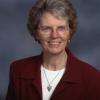New Women of the Old Faith: Gender and American Catholicism in the Progressive Era by Kathleen Sprows Cummings is one of my favorite books. Cummings tells stories of four women, two sisters and two lay women, who struggled in the New World Catholic church to bring the voices of women into the public forum and to change gender biases through education and journalism. It was a difficult road for them as they countered age-old prejudices about the proper place of women in families and public life. The story of Trinity College in Washington, D.C., started by the Sisters of Notre Dame de Namur, was a story of sisters negotiating the resistances of patriarchy to women’s higher education in the shadow of the Catholic University of America. But, they did it, and it is still with us stronger than ever.
Other Catholic women’s colleges developed giving opportunity for lay and women religious to receive education and become leaders in the U.S .Catholic church. However, this was a slow process for sisters, because as Cummings notes in her book, as women’s congregations enthusiastically took on the massive task of developing parish schools throughout the country, they were not able to educate their sisters quickly enough to meet the need. Many sisters were assigned without adequate qualifications to teach in or be administrators of these newly forming institutions.
It was not until the 1950s when the Sister Formation Conference was started that there was a concerted effort among all congregations to professionalize and strengthen their ministries by sending their members for higher education. Congregations were able to send entire groups of newly professed sisters to universities for bachelor degrees, with the help of scholarships from a variety of universities. Other sisters working long days teaching or nursing, spent their summers or evenings studying. These efforts enabled sisters in the United States to becoming some of the most educated women in the world.
History repeats itself – a similar need for sisters’ education and training exists in the Global South today.
When sisters are assigned to teach or work in other ministries without adequate preparation, it can be a disservice for those they serve. It also can undermine a sister’s sense of confidence in her own abilities and even negatively affect the reputation of her congregation and of religious life. Progress is happening. The need for women’s higher education in Kenya motivated the Assumption Sisters of Nairobi to open Regina Pacis University College in spite of current-day patriarchal scoffers. Their determination grew out of recognition that unless sisters are well educated, they cannot exert the positive influence on others and society that their European missionary sister mentors had.
However, staffing universities is challenging. When sisters come home after being educated to the master or doctorate levels in the U.S. or Europe, they are often elected to leadership in their congregations. This this can exclude them – up to 12 years – from joining other sisters in higher education institutions where they can use their expertise for the greater whole.
Today, sisters from the Global South, from both international and local congregations, still receive scholarships from Catholic women’s and co-educational colleges and universities in the U.S. and Europe, but the numbers are small compared to the need. It is very expensive to bring sisters from across the world to Western countries, and when they come, they face added challenges of having to adapt to different cultures and languages, especially while in extended absence from their congregations.
Higher education for sisters is possible in credible universities in some Global South countries, but it is not always easy to secure placement; the numbers of women applying are high, and prejudice against women’s education is still prevalent. Some sisters are challenged to even qualify for university or pass entrance exams because they have not received adequate basic education. Many congregations face this issue because sisters who attend lower schools in remote areas are doing so in places where excellent teachers tend to resist assignment. Lack of adequate funds to send sisters away for higher education even within their own countries is another deterrent for congregations whose primary work is pastoral or educational – ministries that pay little or nothing. Local institutions likewise rarely have means to offer the kind of scholarships that the U.S. Catholic universities and colleges were able to.
So, cohorts of sisters from individual congregations in the Global South are not able to be educated as we were in the U.S.
Online education is probably the most realistic way for numbers of sisters from the Global South to be educated, logistically and economically. But, realistically, as enticing as online higher education appears as one answer, it is still limited by access to electricity and Internet connection. For example, in Uganda only 20 percent of the entire population has access to electricity. I know a sister in Tanzania who drives 60 miles to access the Internet, and another in Assam, India, who takes a day-long bus ride to do the same. These are not uncommon situations.
It is clear that higher education is imperative for the future of sisters to become effective and respected leaders in their countries and in the church worldwide. Sr. Jane Wakaihu, LSOSF, from Kenya, is currently the executive director of the African Sisters Education Collaborative. She has written extensively about the need for and obstacles to sisters’ education in Africa.
As we in the Global North search for ways to expand our consciousness of ourselves as part of a global religious life, we need to continue to commit ourselves to finding new and effective ways to assist our sisters worldwide to become the “New women of the old faith” in their countries as our foremothers did in ours.
[Joyce Meyer, PBVM, is the international liaison to women religious for Global Sisters Report.]
